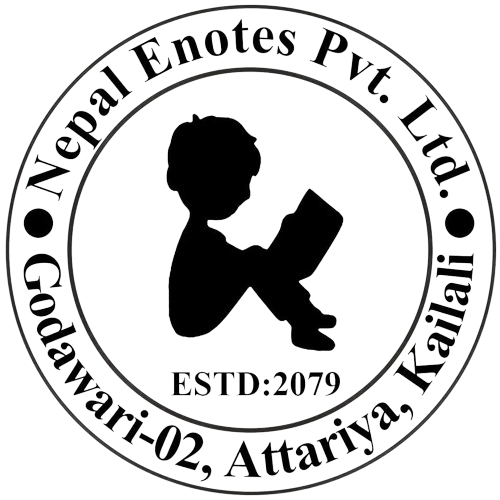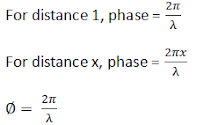Wave motion
Wave motion is the transfer of energy in the form of disturbance from one place to another place due to the periodic motion of particles. Wave motion can be classified into two types according to medium.
1. Electromagnetic Wave
2. Mechanical Wave
1. Mechanical Wave
The wave which requires a material medium for its propagation is called a mechanical wave. For example:- Round wave, Wave in the string, etc.
2. Electromagnetic Wave
The wave which doesn’t require any material medium for its propagation is called an electromagnetic wave. For example:- Lightwave, radio waves, etc.
On the basis of the direction of vibration particle waves are of two types:
i. Transverse Wave
If the vibration of a medium particle is right angle to the direction of wave propagation, then such wave is called a transverse wave. They are transmitted in the form of crest trough.

Longitude wave
If the vibration of a medium particle is in the direction of propagation at a wave, such wave is called a longitudinal wave. In longitudinal waves, particles are vibrates in the form of compression and rarefaction. Example sound wave
Some terms related to wave motion
Displacement
A distance of vibrating particles from a mean position is called Displacement.
It is denoted by y
Amplitude
The maximum displacement of a vibrating particle from its mean position is called Amplitude. It is denoted by a
Wavelength
The distance between any two successive Maximum or minimum is called wavelength
Or
The distance traveled by a wave in one complete cycle is called wavelength. It is denoted by λ.
Frequency
The number of complete oscillations made by a wave in one second is called frequency. It is denoted by ‘F’ and given by,
Time period
Time taken by vibrating particles to complete one vibration is called the time period. It is denoted by ‘T’ and given by,
Phase or phase angle
The state of vibrating particles at a given time is called phase. It is expressed in terms of angle.
Figure
For distance λ, phase 2π
Progressive wave
The wave which is traveling in a forward direction with constant amplitude and frequency is called a progressive wave.

Fig: Progressive wave
Suppose a wave travels in a direction from left to right with velocity ‘v’ in which all particles vibrate with sample harmonic motion. The displacement of the vibrating particle from the origin(o) is given by,
y = asinωt—(i) ( where ‘a’ is amplitude and ‘ω’ its angular velocity
Also, suppose another vibrating particle is at point ‘p’ which is at distance ‘x’ from the origin as shown in the figure. Let φ be the phase angle of the particle at point ‘p’ given by
y = asin(ωt-φ)—(ii)
we know that
for distance λ, the phase angle is 2𝝅
For distance ‘x’, the phase angle is 2𝝅/λ.x
equation (iii) is the required equation for a progressive wave traveling from left to right
If the progressive wave is traveling from right to left then its equation is
y = asin 2π / λ (vt+x)
Equation of progressive also written as,
y = asin (wt – kx)
where, k = 2π / λ
is called wave number of propagation constant.
Super Position therom
When a number of waves having displacement y1 – y2 – y3 – yn, Propagates in a medium then the resultant displacement of a wave at any instant is equal to the vector sum of displacement due to. individual wave. This phenomenon is called the superposition theorem. If y be the resultant displacement then,
Stationary/standing wave
When two progressive waves of the same Amplitude and frequency travel with the same speed in a medium in opposite direction they will super each other and a stationary wave is formed

Fig: Stationary wave
Let us consider two waves of the same amplitude ‘a’ same frequency ‘f’ having ‘λ’ traveling in opposite directions with their displacement
Applying superposition theorem
where [A = 2coskx is the amplitude of stationary wave]
∴equation (iii) is the equation of stationary wave.
Condition of nodes and antinodes
1. For nodes
For node, the amplitude is zero
i.e. A = 0
or, cos kx = 0
2. For antinodes

At x = 0, λ/2,λ, 3λ/2 —– antinodes are formed
If you want to ask anything, please contact us by Messaging us on Social Media.
Class 12 Physics Notes 2078: Complete Physics Guide (New Syllabus) | Questions Answers and Guide | Class 12 Physics Book Solution Guide | Class 12 Physics Book PDF 2078 Solution | Class 12 Physics Book Notes 2078 Guide | Class 12 Physics All Chapter Notes | Physics Chapter Wise Notes. Class 12 Physics Waves motion Notes











Thanks sir for all sub pdf and YouTube channel in all sub Nate available for science thanks you so much 💞
Welcome